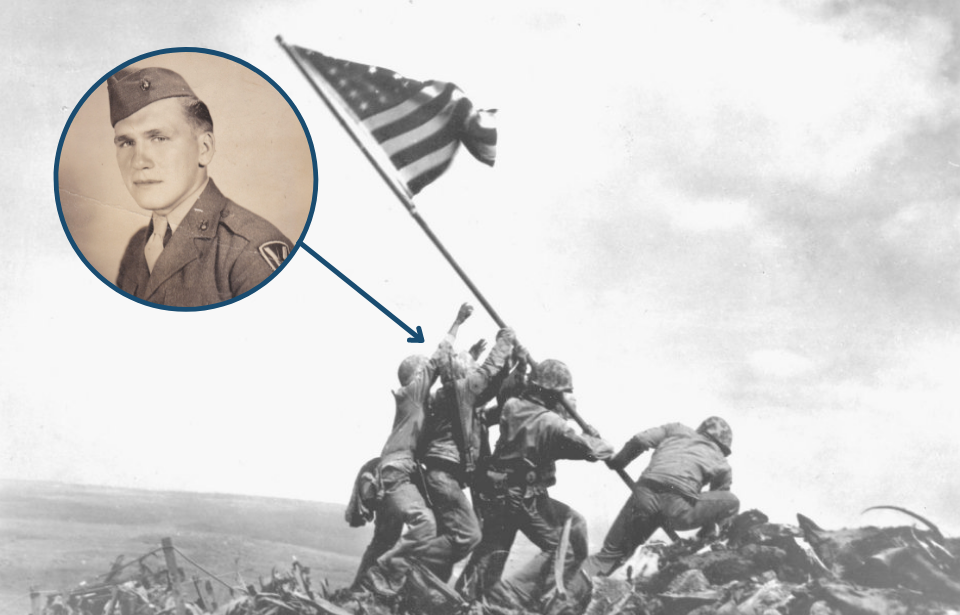The grainy black and white image of six US Marines raising the American flag at the summit of Mount Suribachi on Iwo Jima is one of the most iconic images of World War II (if not history). Only half of the flag raisers survived the remainder of the conflict, and one kept the historic moment a secret for the remainder of his life.
The Battle of Iwo Jima
American forces, including the 28th Marine Regiment, 5th Marine Division, landed on Iwo Jima on February 19, 1945. The island was strategically located 750 miles off the coast of Japan and featured three airfields that the Americans wanted to use to plan a possible invasion of the mainland.
It was the 28th Marines’ mission to capture Mount Suribachi on that first day, but this was delayed due to heavy Japanese resistance. By the time the six Marines tied their flag to an old pipe and stuck it into the rubble of Mount Suribachi, four days of intense combat on the island had devastated the Imperial Japanese Army.
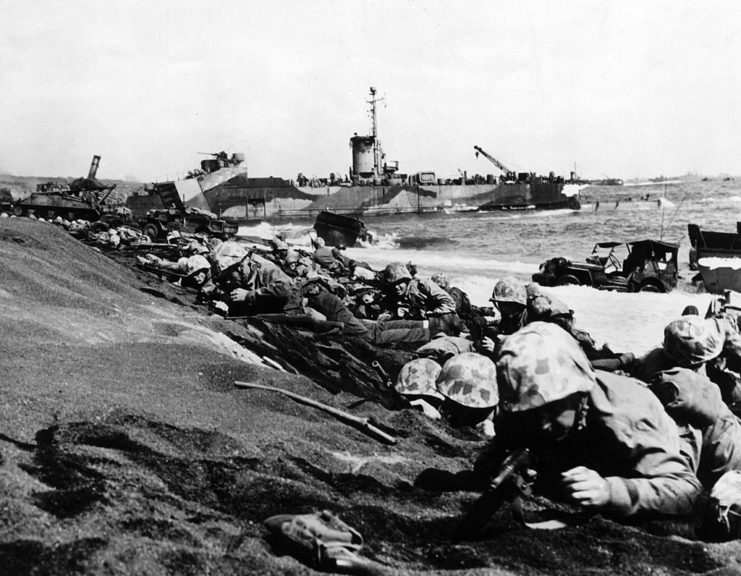
Even though the island was heavily fortified and dotted with networks of underground bunkers, the American forces dominated the land and air. Once they’d accumulated troops and machinery along the beach, which was surrounded by 15-foot high banks of volcanic ash, Japanese commander Lt. Gen. Tadamichi Kuribayashi launched an artillery attack.
By the evening, 30,000 US troops had landed on Iwo Jima and another 40,000 were close behind. That night, Japanese soldiers left their system of tunnels and were encouraged to trick the Americans into approaching them. This was primarily done by imitating an injured corpsman to draw the Navy hospital personnel who accompanied the Marine infantry units.
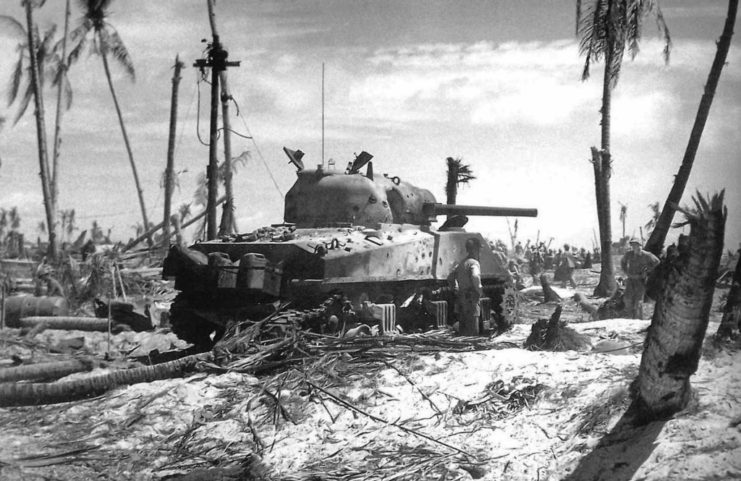
Eventually, the Japanese began to run out of provisions, allowing the Marines to advance further inland. Toward the end of the battle, many fought to the death in hand-to-hand combat. In total, between 18,000 and 20,000 Japanese troops died on Iwo Jima, compared to around 6,800 American deaths, making the battle one of the bloodiest to occur in the Pacific Theater.
“Now All Together”
The famous image of six Marines raising the American flag over Iwo Jima was the second flag-raising to take place on February 23, 1945. The photo, taken by Joe Rosenthal, depicts Marines from E Company, 2nd Battalion, 28th Marine Regiment, 5th Marine Division.
The six men, from left to right, are: Pfc. Ira Hayes, Pfc. Harold Schultz, Sgt. Michael Strank, Pfc. Franklin Sousley, Pfc. Harold Keller and Cpl. Harlon Block. Sadly, Strank, Sousley and Block were killed in action as the fighting on Iwo Jima continued.
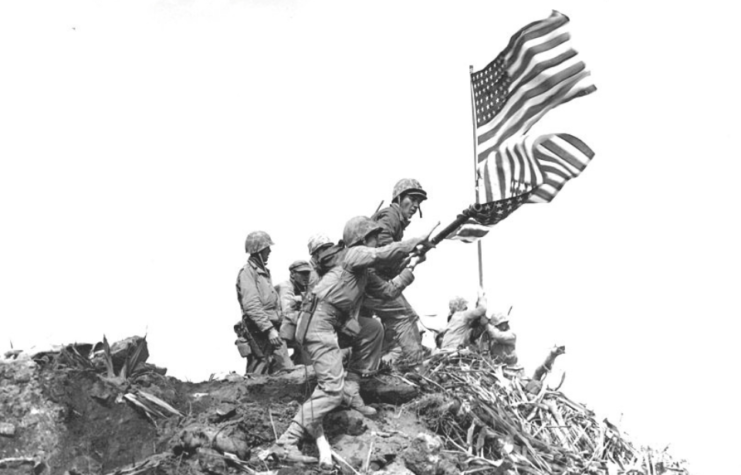
Originally, almost all of the flag raisers were incorrectly identified or attributed to the wrong position. In 2016, the Marine Corps publicly announced that Corporal (then Private First Class) Harold Schultz was one of the flag raisers. Schultz was originally thought to be Navy Hospital Corpsman Pharmacist’s Mate Second Class John Bradley, but it didn’t seem to bother the veteran.
Harold Schultz was a decorated veteran
Harold Henry Schultz was born in Detroit, Michigan in 1925. He enlisted in the Marine Corps Reserve in 1943, training at Camp Pendleton, California and Camp Tarawa, Hawaii. He was assigned to E Company, 2nd Battalion, 28th Marine Regiment, 5th Marine Division prior to his training, and was later deployed to Iwo Jima.
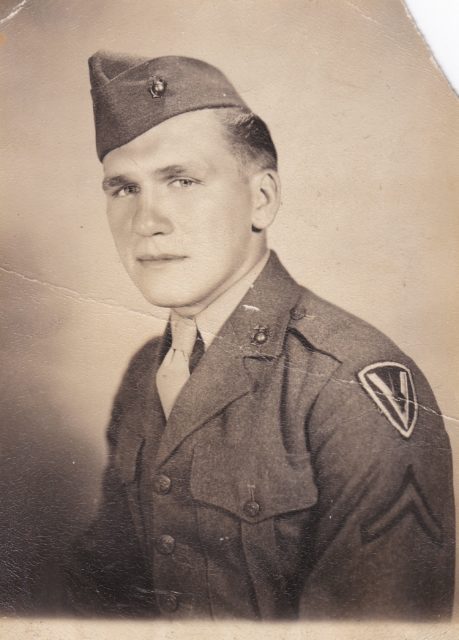
On February 23, 1945, Schultz, a Marine mortarman filling in as a rifleman, joined a patrol of 42 men and climbed Mount Suribachi. They captured it with relatively little resistance, and to celebrate their victory placed an American flag at the top. Schultz guarded the men during the first flag raising. After the first photo was taken, the Japanese launched a surprise attack.
Two hours later, a larger flag was placed next to the original, as it was felt the first was too small, and Schultz was one of the six men who famously erected it. Less than a month later, he was wounded by shrapnel and given an honorable discharged. He was later awarded the Purple Heart, the Navy Presidential Unit Citation and the Asiatic-Pacific Campaign Medal with one Bronze Star.
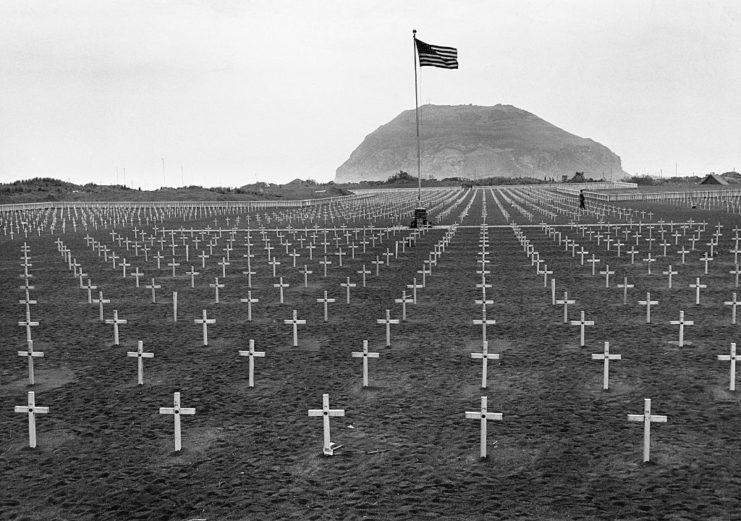
The famous image of victory on Iwo Jima was published in thousands of publications in the United States and abroad. The man Schultz was mistaken for, Bradley, enjoyed the fame he received when he returned home – he was even featured in a publicity campaign for the Seventh War Loan Drive.
Harold Schultz never considered himself a hero
Following the war, Harold Schultz settled in California, where he worked for the United States Postal Service. He never publicly discussed his role in the Iwo Jima flag raising, even though he likely knew he was in the famous image. In 1995, he passed away after having a heart attack and was buried at the Hollywood Forever Cemetery in Los Angeles.
In 2016, Schultz was officially recognized by the Marine Corps as one of the Iwo Jima flag raisers. His stepdaughter, Dezreen MacDowell, recalled that her stepfather had confided in her once that he was one of them. She told Schultz that he was a hero, to which he replied, “No, I was a Marine.”
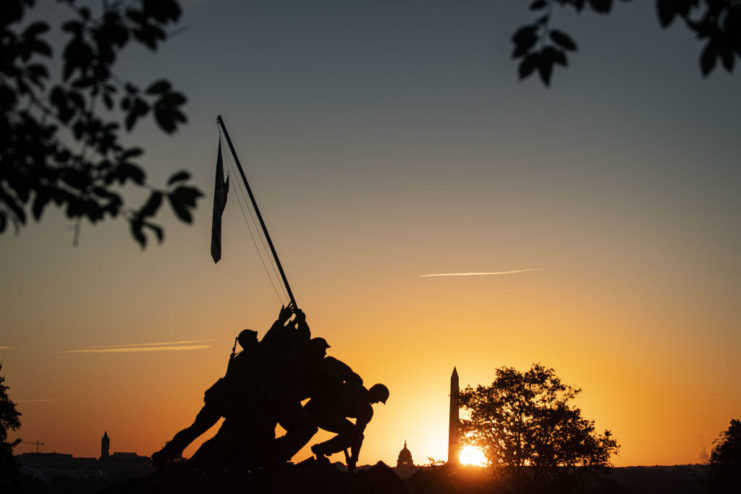
More from us: Here’s What Happened to the U.S. Marines Who Lifted the Flag at Iwo Jima
Schultz is remembered by his family as not only a hero, but as someone who made the best of his life, despite the horrific trauma he endured on Iwo Jima. His stepdaughter said, “Herald was a progressive in his beliefs. He was pro-animals, pro-civil rights, pro-Native American rights, and pro-gay rights. He was an interesting man in every sense of the word.”
